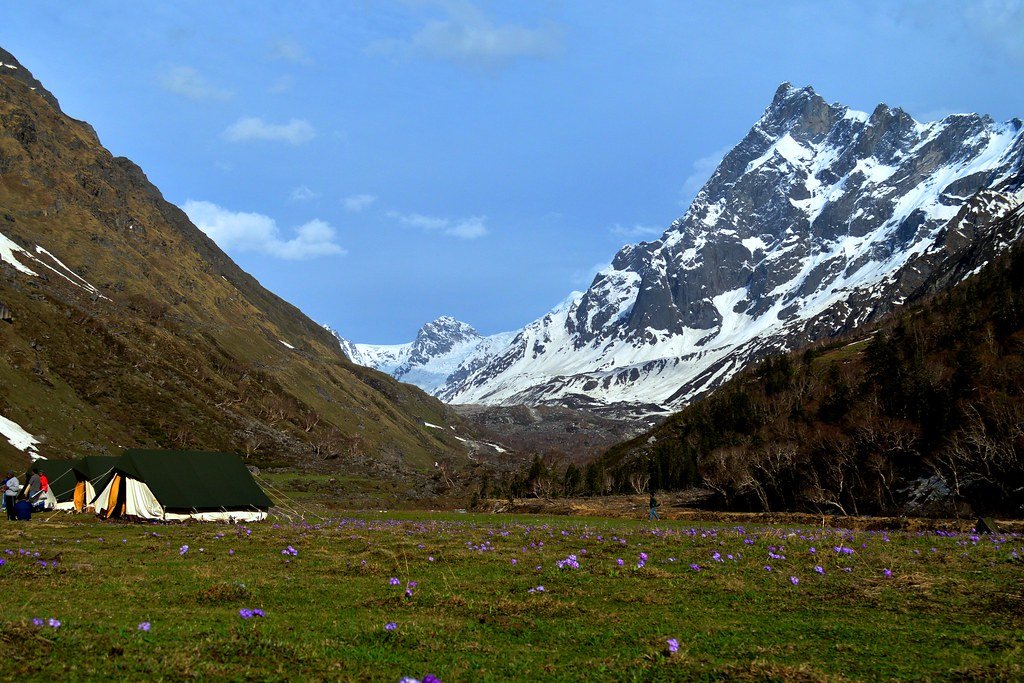Top 24 Places To Visit In Bikaner | Things To Do | Best Time To Visit | Complete Tour Guide
Situated in the northwestern region of Rajasthan, India, Bikaner is a city nestled within the Thar Desert, approximately 385 km west of Delhi. Founded in 1488 by Rao Bika, a Rajput prince, it served as the capital of the former princely state of Bikaner under the rule of the Rathore dynasty. The city boasts a wealth of historical monuments, including the renowned Junagarh Fort, Lalgarh Palace, and Karni Mata Temple. Bikaner is equally celebrated for its distinctive cuisine, with the spicy Bikaneri bhujia, crafted from moth beans and spices, standing out as a local culinary highlight.
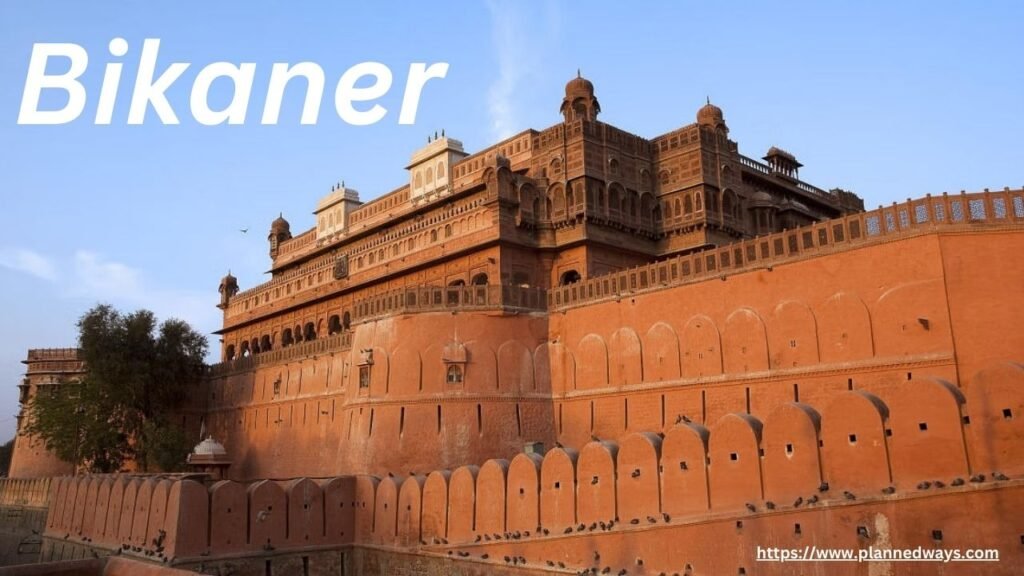
Best Places To Visit In Bikaner:
Bikaner is famous for its impressive forts, palaces, and havelis (traditional mansions), including Junagarh Fort, Lalgarh Palace, and Laxmi Niwas Palace. The city is also renowned for its intricately carved temples, such as Karni Mata Temple, which is known for its population of rats considered sacred by devotees.
Here is some places to visit in Bikaner:
1.Junagarh Fort:
Constructed in the late 16th century by Raja Rai Singh, the sixth ruler of Bikaner, Junagarh Fort stands as a historic stronghold in Bikaner. This architectural marvel boasts an amalgamation of Rajasthani, Mughal, and European styles, evident in its numerous palaces, temples, and pavilions. Protected by a surrounding moat, the fort holds the distinction of never being conquered by any adversary throughout its history. Opening hours for visits are from 10 a.m. to 4:30 p.m. daily. Ticket prices are as follows: 50 INR Indian (Student Concession): 30 INR. 300 INR Foreigner (Student Concession): 150 INR Audio Tour is available at an additional cost: Audio Tour: 350 INR Audio Tour (Student Concession): 200 INR.
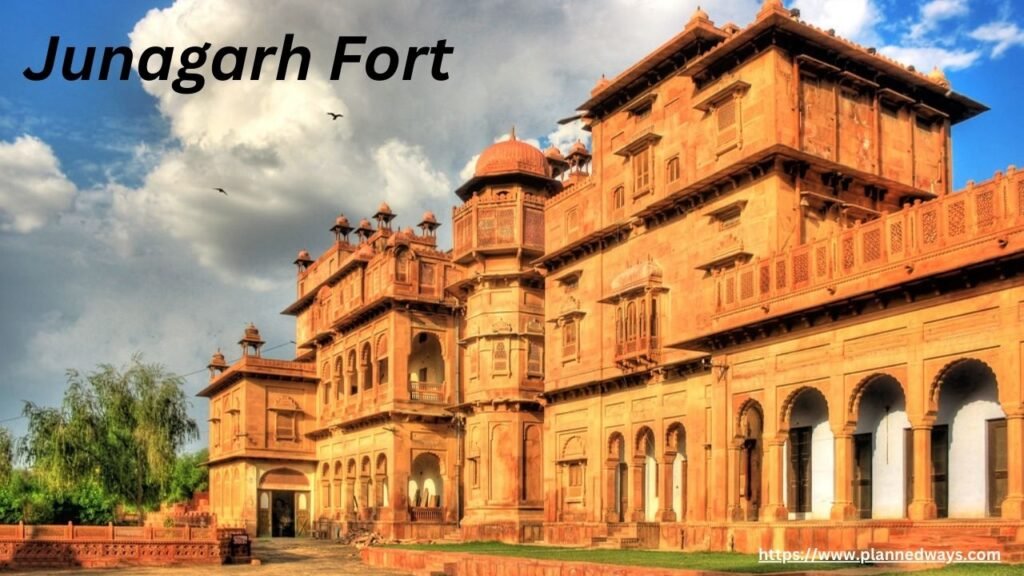
2. Lalgarh Palace:
Lalgarh Palace, an enchanting historical marvel in Bikaner, was commissioned by Maharaja Ganga Singh in honor of his father, Maharaja Lal Singh, during the period from 1902 to 1926. This palace seamlessly blends Indian, European, and Mughal architectural styles, boasting intricate carvings, fireplaces, colonnades, and latticework. Housing a museum and library, the palace serves as a testament to the royal heritage and culture of Bikaner. Whether you’re a tourist exploring its grandeur or a guest at the heritage hotel within its wings, Lalgarh Palace offers a captivating experience. Open daily from 10 a.m. to 5 p.m., the entry fee is 20 INR for Indians and 100 INR for foreigners.

3. Karni Mata Temple:
The Karni Mata Temple, situated in Deshnoke, 30 km south of Bikaner, is a Hindu temple dedicated to Karni Mata, a 15th-century female sage and incarnation of the goddess Durga. Renowned for its unique feature, the temple houses around 25,000 black rats that are both revered and believed to be the reincarnated descendants of Karni Mata and her family. Spotting a white rat among them is considered particularly auspicious. The temple draws devotees and tourists alike, seeking blessings and marveling at this extraordinary phenomenon. Visiting hours are from 4 a.m. to 10 p.m. every day. Admission is free, and photography is permitted.
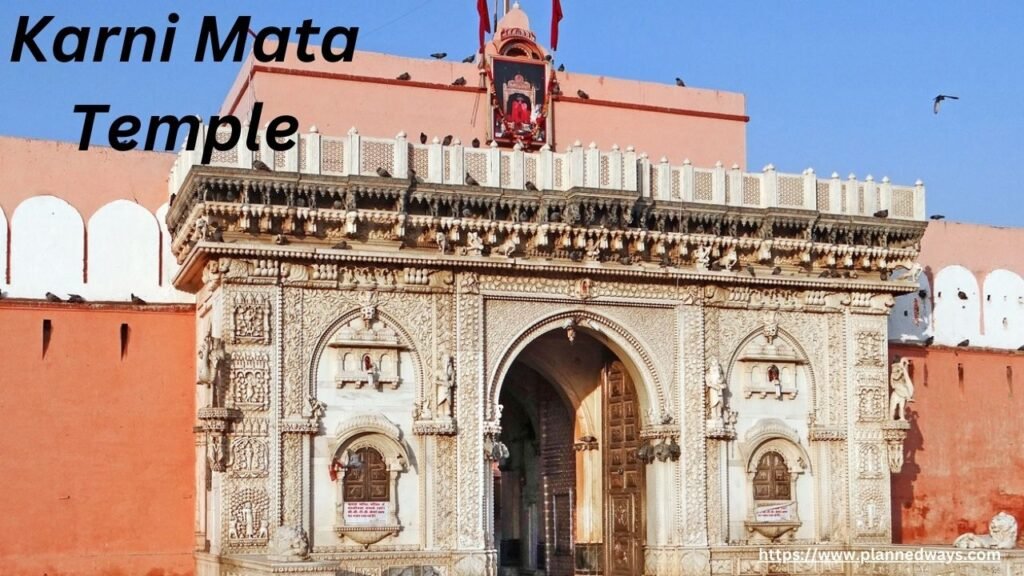
4. Gajner Palace and Lake:
Gajner Palace and Lake, located in the vicinity of Bikaner, stand as a picturesque and historic destination. Originally constructed by Maharaja Ganga Singh as a hunting lodge, the palace was later transformed into a heritage hotel. Encircled by a scenic lake and a wildlife sanctuary, the surroundings offer glimpses of diverse bird species and wildlife. The palace itself is celebrated for its architectural grandeur, well-maintained gardens, and a museum. Whether exploring as a tourist or opting for a luxurious stay in one of its rooms or suites, Gajner Palace promises a captivating experience. Open daily from 10 a.m. to 7 p.m., the admission fee is Rs. 280 per person for a duration of 30 minutes.
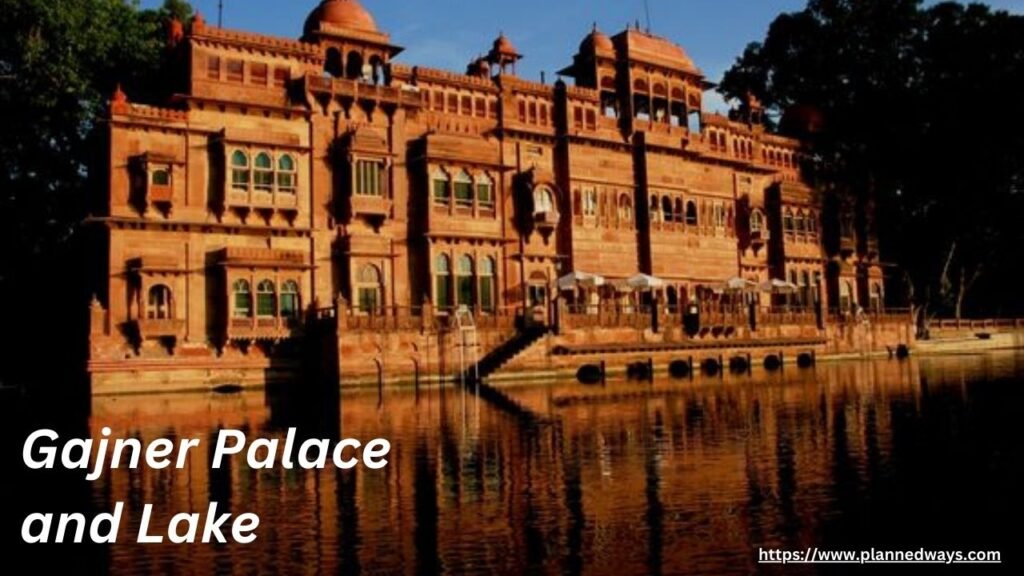
5. Bhandasar Jain Temple:
The Bhandasar Jain Temple, situated in Bikaner, was constructed in the 15th century by the affluent Jain merchant Bhandasa Oswal. Devoted to Sumatinath, the fifth Tirthankara of Jainism, this temple is renowned for its intricate wall paintings, carvings, and lacquer work. Open daily from 5 a.m. to 1 p.m. and 5:30 p.m. to 11:30 p.m., there is no entry fee, and photography is allowed.

6. Camel Breeding Farm:
The Camel Breeding Farm in Bikaner, is a government-managed facility dedicated to the raising and research of camels. Regarded as one of the largest camel breeding farms in Asia, it houses approximately 400 camels of various breeds. Visitors can explore the farm as tourists, observing the camels, their behavior, and the products derived from them. Additionally, the farm offers attractions such as camel rides, camel’s milk ice-creams, and a camel museum. Operating daily from 2:30 p.m. to 5 p.m., the entry fee is 50 INR per person.
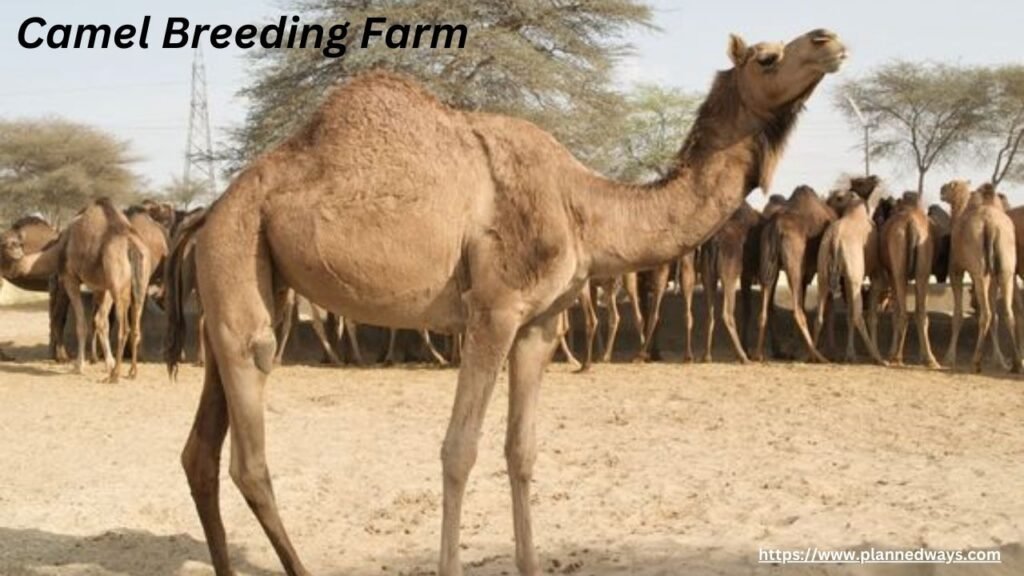
7. Shiv Bari Temple:
The Shiv Bari Temple, located in Bikaner, is a Hindu temple dedicated to Lord Shiva. Constructed in the 19th century by Maharaja Doongar Singh in honor of his father, Maharaja Lal Singh, the temple is crafted from red sandstone. It features a four-faced black marble statue of Lord Shiva and a bronze Nandi facing the Shiva Lingam. Within the temple complex, there are two sizable water reservoirs known as bawaris. The temple is renowned for its wall paintings, carvings, and lacquer work, depicting the vibrant local culture and traditions. Open daily from 7 a.m. to 7 p.m., entry is free, and photography is allowed.

8. Rampuria Haveli:
Rampuria Haveli, a collection of nine havelis, was erected by the affluent Rampuria merchant family in Bikaner,Crafted from red sandstone, these havelis boast intricate carvings, ornate facades, and exquisite frescoes. A harmonious blend of Mughal, Victorian, and Rajputana architecture is evident, reflecting the opulent heritage and culture of Bikaner. Open to the public, some havelis have been transformed into heritage hotels. Visitors can explore these havelis, marvel at their beauty and grandeur, and delve into their rich history. Accessible throughout the year, everyday. entry is free.

9. Ganga Singh Museum:
The Ganga Singh Museum, located in Bikaner, serves as a repository of the region’s rich history, culture, and art. Established in 1937 by Maharaja Ganga Singh, a dedicated patron of art and culture, the museum finds its home within the Lalgarh Palace complex, a striking architectural masterpiece. Its diverse collection encompasses ancient coins, manuscripts, paintings, sculptures, weapons, and archaeological artifacts. Open daily from 10:30 a.m. to 4:30 p.m., except on Fridays and public holidays, the entry fee is Rs. 3 per person.

10. Laxmi Niwas Palace:
Laxmi Niwas Palace, a heritage hotel in Bikaner, was originally the royal residence constructed by Maharaja Ganga Singh between 1898 and 1902. Fashioned from red sandstone, the palace boasts a breathtaking Indo-Saracenic architecture. Comprising 42 rooms and suites, along with a restaurant, bar, library, and museum, the palace offers a luxurious experience. Beyond accommodation, it serves as a sought-after venue for weddings, events, and cultural programs. Whether touring as a visitor or enjoying a stay in one of its opulent rooms or suites, Laxmi Niwas Palace promises a regal experience. Operating hours for visits are from 10 a.m. to 5 p.m. daily, with the exception of Sundays when the venue is closed. The entry fee is Rs. 20 per person.

11. Bikaji Ki Tekri:
Bikaji Ki Tekri, a historic fort in Bikaner, was erected in the 15th century by Rao Bika, the city’s founder. As the oldest building and the inaugural fort of Bikaner, it is constructed from red sandstone and houses numerous cenotaphs of the city’s rulers. The fort also features an intricate network of underground chambers interlinked with each other. Open for visits throughout the year, every day, you can explore Bikaji Ki Tekri to appreciate its ancient architecture and delve into the history of Bikaner. Distance from Bikaner: 3 km. Entry Fee: Free.
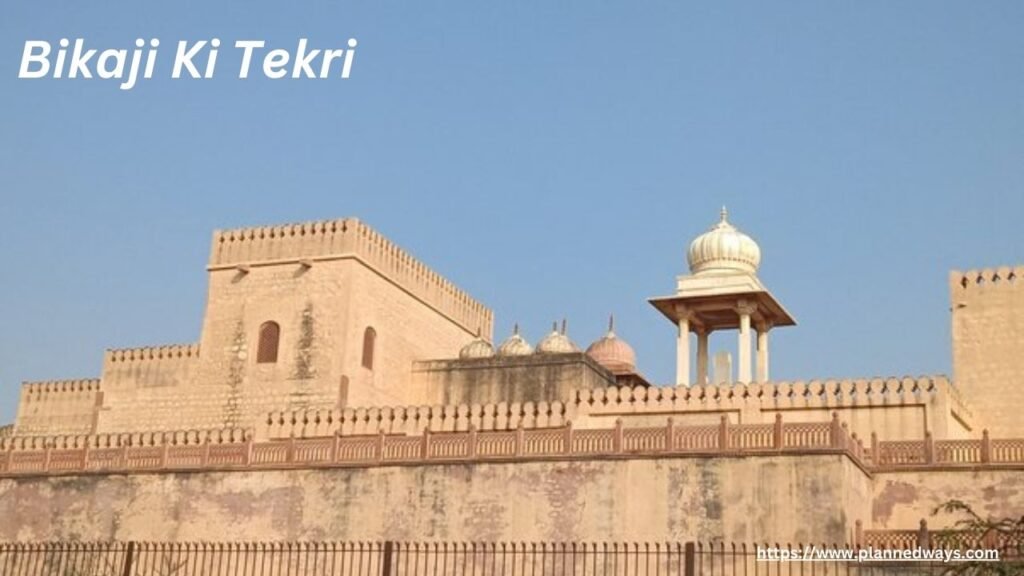
12. Sadul Singh Museum:
The Sadul Singh Museum, situated in Bikaner, serves as a repository of the region’s history, culture, and art. Established in 1972 by Maharaja Dr. Karni Singh, the former ruler of Bikaner, as a tribute to his father Maharaja Sadul Singh, the museum is housed on the second floor of the Lalgarh Palace, an architectural masterpiece. With a diverse collection, the exhibits include paintings, trophies, weapons, photographs, and artifacts associated with the kings of Bikaner, such as Maharaja Ganga Singh, Maharaja Karni Singh, and Maharaja Sadul Singh. Open daily from 10:30 a.m. to 4:30 p.m. (Closed on Fridays and public holidays), the entry fee is Rs. 3 per person.

13. Prachina Museum:
Prachina Museum, a cultural center in Bikaner, is dedicated to showcasing the rich heritage and art of the region. Established in 2000 by Princess Siddhi Kumari, daughter of the late Maharaja Narendra Singh of Bikaner, the museum finds its place within Junagarh Fort, a historic monument and popular tourist attraction. The exhibits include royal costumes, textiles, portraits, contemporary art, religious accessories, and more. A visit to the museum offers an opportunity to delve into the history and culture of Bikaner and its rulers. Visit Time: 9 a.m. to 6 p.m. daily Entry Fee: Rs. 10 per person for Indians, Rs. 25 per person for foreigners.

14. Shri Laxminath Temple:
Shri Laxminath Temple stands as one of Bikaner’s oldest and most venerated Hindu temples, devoted to Lord Vishnu and Goddess Lakshmi. Originally constructed by Maharaja Rao Lunakaran in the 15th century and later expanded by Maharaja Ganga Singh, the temple is renowned for its intricate silver artwork, exquisite idols, and vibrant paintings. Serving as a hub for various religious festivals such as Ram Navami, Janmashtami, and Diwali, the temple is a revered spiritual center. Visit Time: 5 AM – 1 PM and 5 PM – 11 PM (Daily). Entry Fee: Free. Photography: Allowed.

15. Kodamdesar Temple:
Kodamdesar Temple, situated in Bikaner, is a Hindu temple venerating Lord Bhairuji, an incarnation of Lord Shiva. Established in the 15th century by Rao Bika, the founder of Bikaner, the temple is renowned for its annual fair, drawing thousands of devotees and tourists. Embraced by a tranquil and serene ambiance, nestled in nature away from the city, the temple offers a peaceful retreat. Distance from Bikaner: 24 km Visit Time: Throughout the year, every day Entry Fee: Free.

16. Ratan Bihari Temple:
Ratan Bihari Temple, located in Bikaner, is a Hindu temple dedicated to Lord Krishna and his consort Radha. Originally constructed in 1851 by Maharaja Ratan Singh and later enhanced by his son Maharaja Surat Singh, the temple boasts a stunning white marble structure with exquisite Indo-Mughal architecture. Serving as a focal point for various religious festivals like Janmashtami, Holi, and Radha Ashtami, the temple invites devotees and visitors alike. Visit Time: 7:15 a.m. to 7:20 p.m. daily Entry Fee: Free Photography: Allowed.

17. :
Kote Gate serves as the primary entrance to Bikaner city, distinguishing the old city from the new. This imposing structure, constructed from bricks and red sandstones, stands tall, showcasing the regal architecture of Bikaner. Beyond its architectural significance, Kote Gate is a bustling market where a variety of items, including jewelry, clothing, and food, can be found. Exploring Kote Gate allows for the discovery of nearby attractions such as Jain Temple Bhandasar, Rampuria Havelis, and Junagarh Fort. To fully immerse yourself in the culture and heritage of Bikaner, Kote Gate welcomes visitors 24 hours a day, and there is no entry fee for exploration.
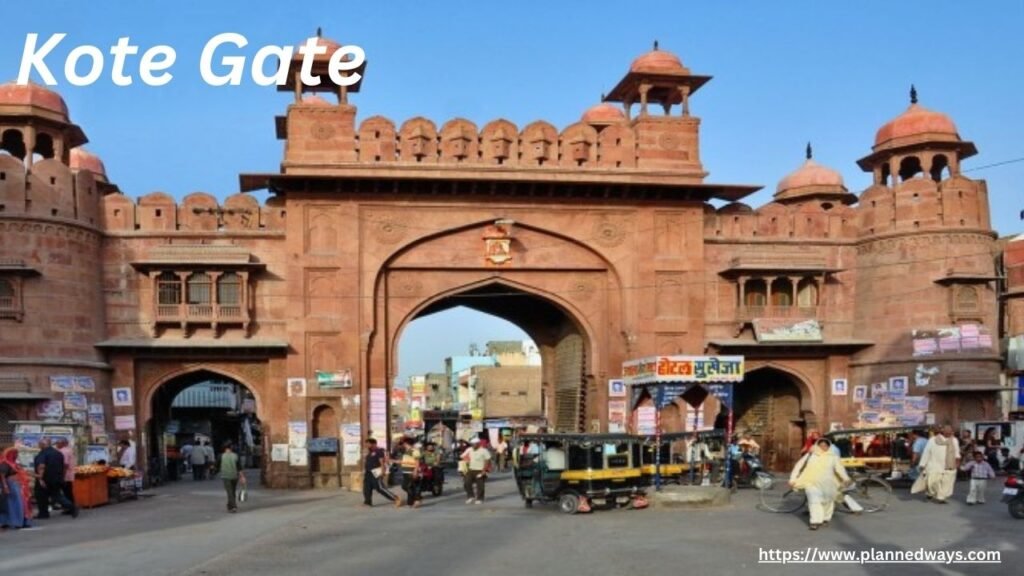
18. Devi Kund Sagar:
Devi Kund Sagar stands as a revered cenotaph complex honoring the courageous Rajput rulers from the Rathore clan of Marwar. Nestled in Bikaner, approximately 9 km from the railway station, it features a collection of regal chhatris crafted from red and pink sandstone, as well as white marble, showcasing the intricate beauty of Rajputana architecture. A favored spot for photography enthusiasts and history lovers, Devi Kund Sagar’s earliest cenotaph commemorates Rao Kalyan Mal, who governed Bikaner from 1539 to 1571 AD, while the most recent one pays tribute to Maharaja Narendra Singh Ji, who passed away in 2003. The ideal times to visit Devi Kund Sagar are during the morning or evening hours when the sun bathes the chhatris in a golden glow. Entrance fees are Rs. 5 for Indians and Rs. 10 for foreigners.
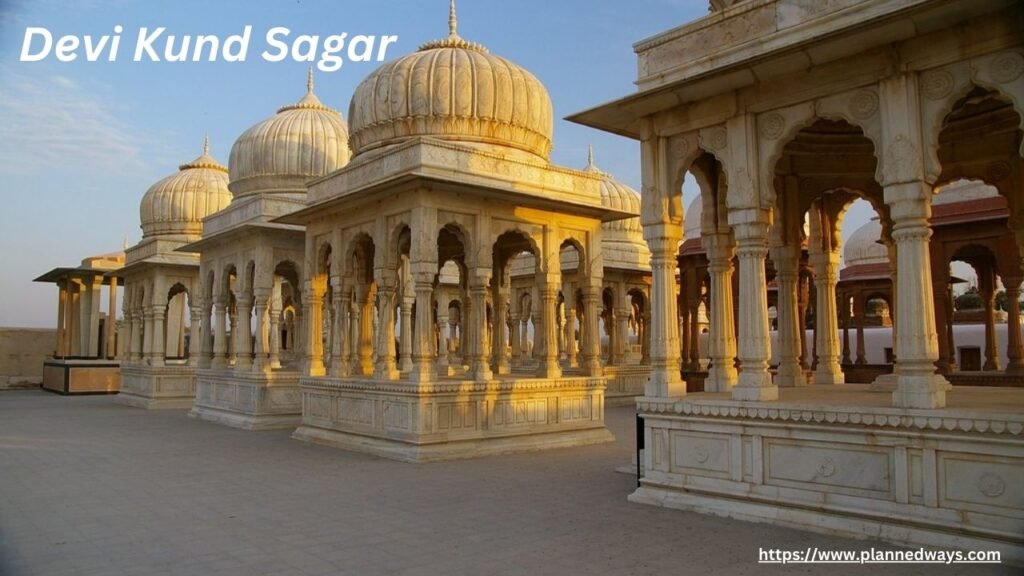
19. Sursagar Lake:
Sursagar Lake in Bikaner, is a historic artificial reservoir situated in the city center. Constructed in the 18th century by Maharaja Sur Singh to meet the water needs of the city, the lake spans around 20 acres, surrounded by vibrant greenery and a bustling marketplace. A favored destination for locals and tourists, it serves as both an attraction and a picnic spot. The optimal time to visit is from October to March when the weather is more pleasant. The entry fee is Rs. 5 for Indians and Rs. 10 for foreigners.
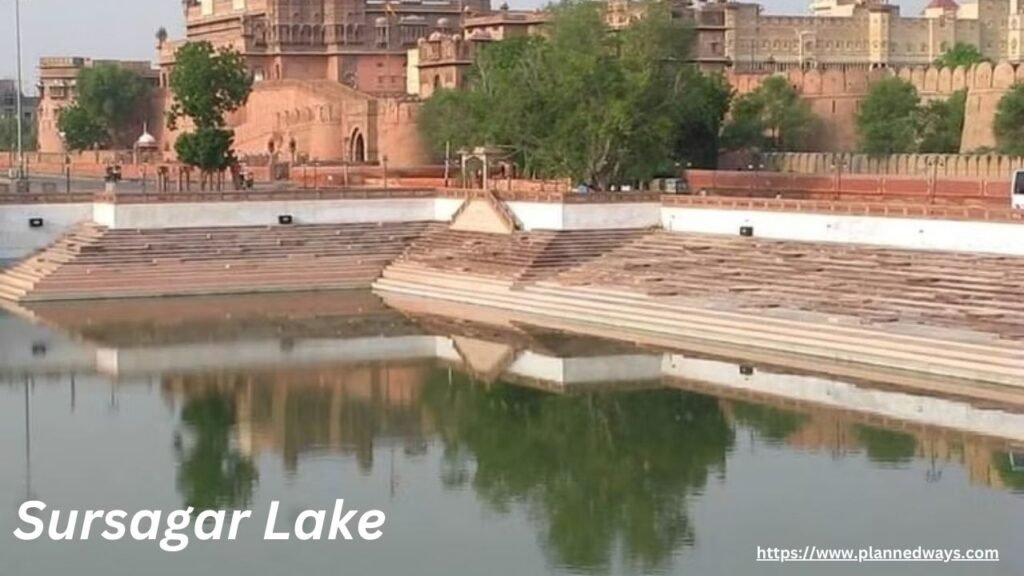
20. Skybird Water Park:
Skybird Water Park, situated in Nal, a small village approximately 8 km from Bikaner city stands as the largest water and amusement park in Western Rajasthan. Boasting an array of enjoyable rides and activities suitable for all ages, the park is an ideal destination for family fun and small picnics. Established in 1999, Skybird Water Park is a part of Ess Ell Entertainments and includes a resort with amenities such as a restaurant, swimming pool, conference hall, and garden. Operating from 10 am to 6 pm every day, the entry fee is Rs. 300 for adults and Rs. 200 for children.
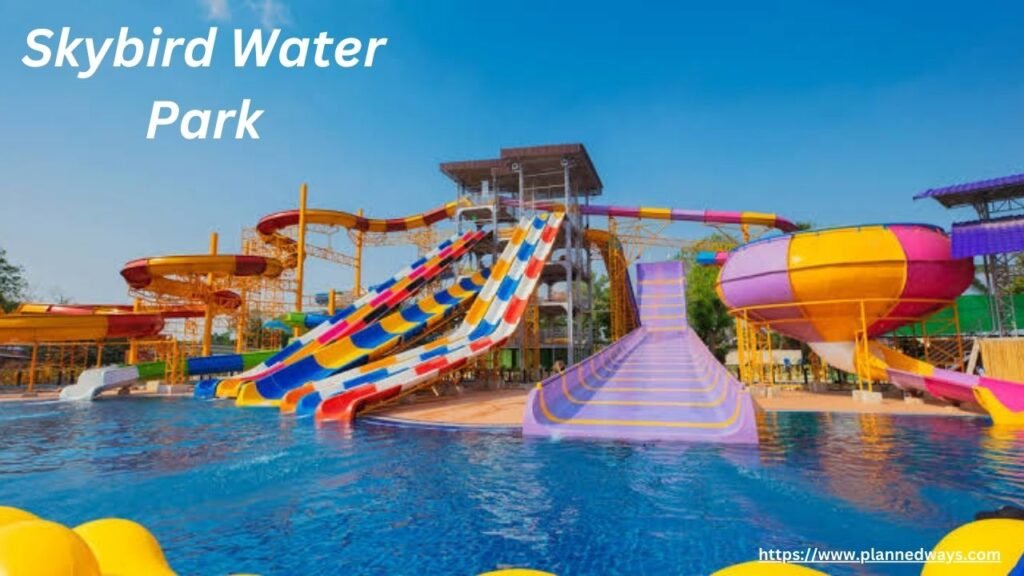
21. Gajner Wildlife Sanctuary:
Gajner Wildlife Sanctuary, nestled in the Bikaner is a picturesque expanse covering 6.46 square kilometers, adorned with diverse flora and fauna. Resting on the banks of Gajner Lake, the sanctuary, once a hunting ground for the Maharaja of Bikaner, has evolved into a favored tourist destination. Among the wildlife inhabitants are deer, antelope, nilgai, chinkara, blackbuck, desert fox, and wild boar. The sanctuary’s proximity to the lake attracts migratory and resident birds, including imperial sand grouse, cranes, pelicans, and flamingos. Notably, a temple dedicated to Kapil Muni, a sage believed to have attained enlightenment here, enhances the sanctuary’s cultural significance. The optimal time to explore this sanctuary is from October to March. Entry fees are Rs. 100 for Indians and Rs. 200 for foreigners. Additionally, visitors can enhance their experience by opting for a safari at Rs. 300 per person or a boat ride priced at Rs. 50 per person to navigate through the sanctuary and the lake.

22. Fun World Waterpark:
Fun World Waterpark, a name associated with numerous amusement and water parks across India, seems to be inquired about the Bikaner. Established in 2015, this water-themed park offers a diverse array of water rides, dry attractions, swimming pools, a rain dance facility, a dance floor, a cafeteria, and the added charm of pet birds and animals. A sought-after destination for family entertainment and intimate picnics, the park caters to a wide audience. For those seeking entry to the Fun World Waterpark in Bikaner, the fees are Rs. 200 for adults and Rs. 150 for children. Operating from 10 am to 6 pm every day of the week, the park promises an enjoyable experience for visitors of all ages.

23. Jorbeer Conservation Reserve:
Jorbeer Conservation Reserve, located near Bikaner, stands out as the largest vulture feeding site in Asia, recognized for its crucial role in vulture conservation. This reserve draws thousands of migratory and indigenous vultures, including species like the cinereous vulture, Himalayan griffon, Eurasian griffon, Indian vulture, red-headed vulture, and Egyptian vulture. Additionally, the reserve is a habitat for various other raptors, such as eagles, kites, and harriers. Encompassing an area of approximately 12 square kilometers on the city outskirts, the reserve was established in 2013 with the primary aim of safeguarding the endangered vultures and preserving their habitat. The ideal time to explore the reserve is from November to February, and it welcomes visitors from 9 am to 5 pm every day. Entrance fees are Rs. 100 for Indians and Rs. 200 for foreigners. To enhance the experience, visitors can opt for a safari or a boat ride to navigate through the reserve and the nearby lake.

24. Gajner Temple:
Gajner Temple, a Hindu shrine dedicated to Lord Shiva, graces the vicinity of Gajner Lake in Bikaner, This revered temple is a sought-after pilgrimage destination where devotees gather to offer prayers and seek blessings from the deity. Renowned for its exquisite architecture, showcasing the regal style of Bikaner, the temple features a spacious courtyard, an impressive shikhara (spire), and a sanctum sanctorum housing the idol of Lord Shiv Located approximately 30 km from Bikaner city, the temple is accessible by taxi, bus, or car. Its gates are open from 6 am to 8 pm on all days of the week. The admission cost for Gajner Temple is Rs. 100 for Indian visitors and Rs. 200 for foreigners.

These were some places to visit in Bikaner. Hope you liked It. Have a safe journey!
Things To Do At Bikaner :
1. Thar Desert:
The Thar Desert, also recognized as the Great Indian Desert, spans a vast arid region covering approximately 200,000 km2 (77,000 sq mi) across India and Pakistan. The optimal time to explore the Thar Desert is from October to March, characterized by cooler and more pleasant weather. Ticket prices for Thar Desert activities vary based on the chosen experience; a jeep safari typically costs around ₹2,000 per person, a camel safari approximately ₹1,500 per person, and a camping experience is priced at around ₹3,000 per person.

2. Explore Bikaner Miniature Arts:
Bikaner Miniature Arts, a traditional art form originating from Bikaner, encompasses the meticulous painting on various surfaces like paper, wood, leather, cloth, marble, or ivory. Utilizing natural pigments and gold, these artworks portray diverse themes, including religious narratives, royal portraits, flora and fauna, and everyday life. Renowned for their intricate details, vibrant colors, and symmetrical patterns, Bikaner Miniature Arts is a proud element of the Rajasthani School of Miniatures, flourishing from the 16th to the 19th century under the patronage of Bikaner rulers. To experience the charm of Bikaner Miniature Arts, the recommended period to visit is from October to March when the weather is more comfortable. The gallery welcomes visitors from 10 am to 5 pm every day, with an entry fee of Rs. 100 for Indians and Rs. 200 for foreigners.

3. Enjoy Bikaner Camel Safari:
Embark on a thrilling adventure with Bikaner Camel Safari, an activity that immerses you in the enchanting landscape of the Thar Desert atop a camel. This experience allows you to discover the rich culture, wildlife, and scenery of Rajasthan in a truly unique manner. Bikaner Camel Safari provides diverse packages ranging from one to six days, offering overnight camping and inclusive meals. Additionally, you have the flexibility to tailor your safari to align with your specific preferences and interests. The optimal time for indulging in Bikaner Camel Safari is from October to March, during the more agreeable and cooler weather. Operating from 10 am to 6 pm throughout the week, the ticket prices vary based on the chosen package and duration. For instance, a one-day safari costs approximately ₹1,500 per person, a two-day safari is priced around ₹3,000 per person, and a six-day safari is available for approximately ₹15,000 per person.

4. Visit Acharya Tulsi Samadhi:
Acharya Tulsi Samadhi, situated in Bikaner, stands as a memorial honoring the life and contributions of Acharya Tulsi, a prominent Jain religious leader. Renowned for founding the Anuvrata movement, the Jain Vishva Bharti Institute in Ladnun, and authoring over one hundred books, he served as the ninth Acharya of the Terapanth Sangha and played a pivotal role in advancing Jain meditation. Located in close proximity to the Jain Temple Bhandasar, the samadhi comprises a white marble structure housing a meditative statue of Acharya Tulsi. Surrounding the samadhi are a garden and a museum showcasing his personal belongings, photographs, and writings. A source of reverence and inspiration for Jains and non-Jains alike, the samadhi was inaugurated on 23 June 1998, a year following Acharya Tulsi’s demise. Constructed by his disciples and followers, the samadhi welcomes visitors from 9 am to 5 pm every day, with an entry fee of Rs. 10 for Indians and Rs. 20 for foreigners.

5. Take adventure At Bikana Chowpatty:
Bikana Chowpatty stands as a recreational haven in Bikaner, providing a delightful array of activities such as boating, zorbing, bungee jumping, and diverse food options. Situated in proximity to the Public Park and the Lily Pond, this attraction was inaugurated in 2023, aiming to become a fresh destination for both tourists and locals alike. Bikana Chowpatty welcomes visitors from 10:00 AM to 11:30 PM daily.

How To Reach From Delhi To Bikner:
- By Air:
- The nearest airport to Bikaner is Nal Airport (BKB), which is around 13 km from the city center.
- You can take a direct flight from Indira Gandhi International Airport (DEL) in Delhi to Nal Airport.
- The flight duration is approximately 1 hour.
- By Train:
- Bikaner Junction (BKN) is the main railway station in Bikaner, and it is well-connected to Delhi by train.
- Several trains operate between New Delhi Railway Station (NDLS) and Bikaner Junction.
- The train journey may take around 8 to 10 hours, depending on the specific train and its route.
Here Are Some Trains From Delhi To Bikaner Railway Station:
| Train Name | Train Number | Departure Station | Departure Time | Arrival Station | Arrival Time | Fare |
|---|---|---|---|---|---|---|
| Duronto Express | 12259 | New Delhi | 11:15 | Bikaner Jn | 18:20 | ₹ 2,000 |
| Intercity SF Express | 22472 | Delhi Sarai Rohilla | 08:40 | Bikaner Jn | 16:20 | ₹ 750 |
| Howrah – Bikaner SF Express | 12371 | Old Delhi | 10:05 | Bikaner Jn | 17:50 | ₹ 300 |
| Delhi Sarai Rohilla – Bikaner SF Express | 12457 | Delhi Sarai Rohilla | 23:35 | Bikaner Jn | 07:20 | ₹ 1,040 |
| Rajasthan Sampark Kranti Express | 22463 | Delhi Sarai Rohilla | 21:25 | Bikaner Jn | 08:15 | ₹ 1,950 |
Fares are for the sleeper class and may vary. Check the exact fare and availability on the IRCTC website or app.
- By Road:
- Bikaner is well-connected to Delhi by road, and you can opt for a bus or hire a taxi/private car.
- The distance between Delhi and Bikaner is approximately 450 km, and the journey by road may take around 8 to 10 hours, depending on the route and traffic conditions.
- National Highway 11 is one of the common routes for road travel between Delhi and Bikaner.
Nearby Places To Bikaner:
Here’s a table listing nearby cities to visit from Bikaner, along with their approximate distances:
| City | Distance from Bikaner (Approx.) |
|---|---|
| Jaipur | 330 km |
| Jodhpur | 250 km |
| Jaisalmer | 330 km |
| Ajmer | 400 km |
| Pushkar | 425 km |
| Udaipur | 525 km |
| Kota | 450 km |
| Mount Abu | 450 km |
| Delhi | 450 km |
| Agra | 680 km |
Best Time To Visit Bikaner
The optimal period to explore Bikaner is during the winter months, from November to February. With pleasant weather and cooler temperatures, this season offers an ideal setting for travelers to leisurely wander through the forts, palaces, and bustling bazaars. Additionally, the renowned Camel Festival, held annually in January, provides a unique opportunity to witness and appreciate the cultural and artistic heritage of Rajasthan.



